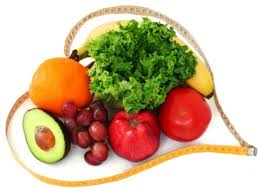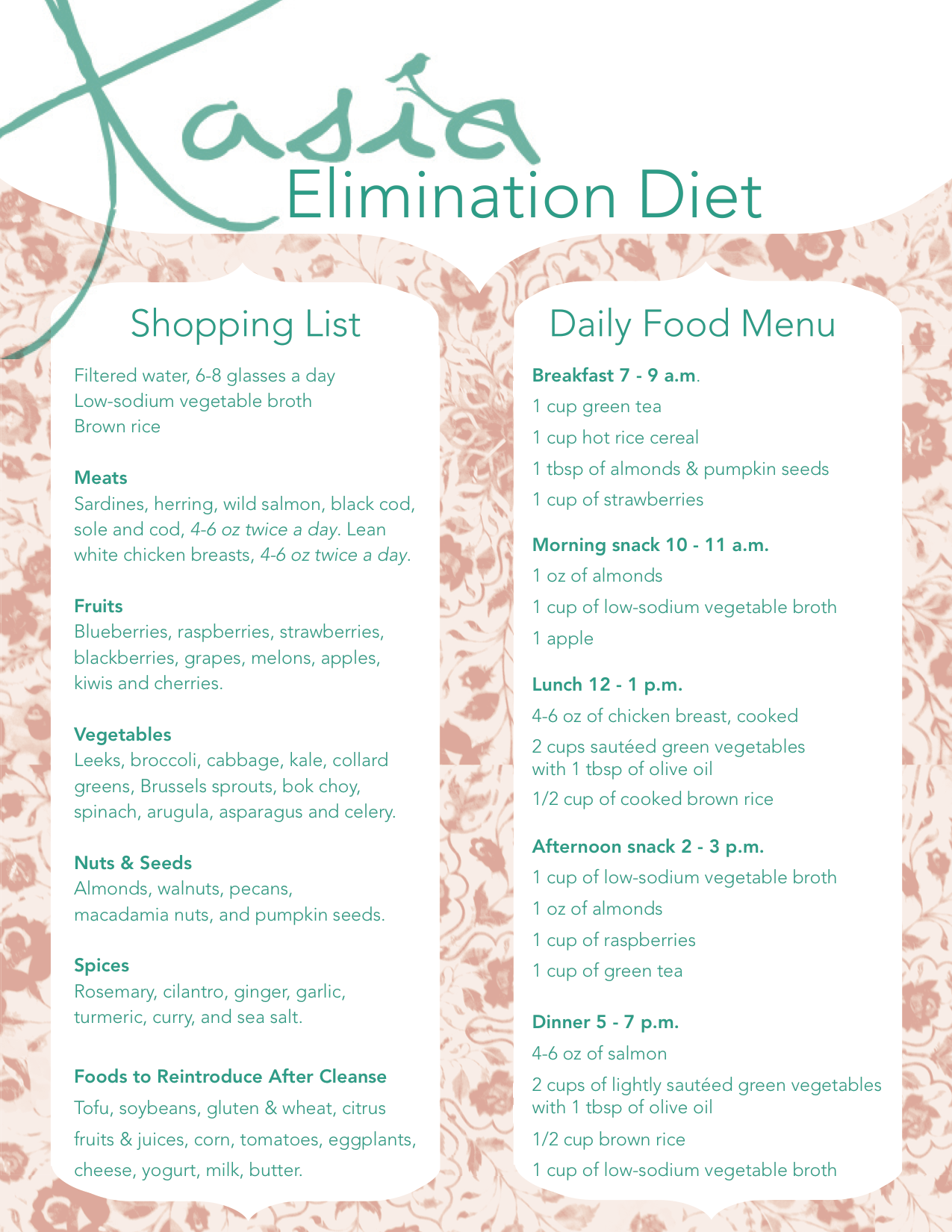Unlike most diets, the "elimination diet" serves a unique purpose other then strictly being a catalyst to losing extra weight. The goal of the elimination diet is to help any suffering from certain digestion issues, skin or hormone havoc, and other environmental + internal issues - and to determine if something you're eating could be contributing to the problem. It is also an option for a seasonal cleanse.
By following an “Elimination Diet”, you may be able to identify foods that trigger certain symptoms including joint pain, acne breakouts, skin rashes, fatigue, headaches and more. Let's get started.
Elimination Phase – First Two Weeks:
Before you begin, make a list or chart of all your symptoms, note their frequency, and rate their severity on a scale of 1 to 10. Note any other characteristics or associations with particular food intake, meal, etc.
It is important not to cheat on this Elimination Diet because any exposure can cause a reaction and your body will not be able to cleanse itself and prepare for the next stage of the diet where you identify any offender foods.
Items to stock in your pantry and fridge:
Use "organic" when possible.
- dark leafy greens (dandelion greens, kale, collards, chard, bok choy, mustard greens...)
- cabbage (all varieties)
- lettuce
- cucumbers
- ginger
- garlic
- onions
- yams
- winter squash
- broccoli
- cauliflower
- Brussels sprouts
- carrots
- celery
- avocados
- cranberries (fresh or frozen)
- blueberries

- cherries
- raspberries
- pears
- apples
- teff
- wild rice
- adzuki beans
- mung beans
- lentils
- sunflower seeds
- pumpkin seeds
- flax seeds
- hemp seeds
- pumpkin seed butter
- sunflower seed butter
- wakame and nori seaweeds
- wild salmon
- organic chicken
- organic ground turkey
- organic lamb
Eliminate the following food groups along with all food items which contain any of these foods.
- Dairy (including milk, cheese, whey protein, kefir, yogurt, ice cream, frozen yogurt, etc.)
- Gluten containing grains: wheat, rye, oats, barley, (couscous, pilaf, tabbouleh etc.) and any foods containing these items (sauces, beer, ketchup and other condiments containing vinegar, some puddings, etc.)
- Egg and foods containing egg
- Soy products including miso, tofu, tempeh, soy sauce, tamari
- Nuts and seeds
- Shellfish
- Corn and corn products including chips, tortillas, anything with high fructose corn syrup added
- Sweeteners (with the exception of stevia), food additives, dyes, colors, etc.
- Coffee, chocolate, caffeine containing herbal teas
- Alcohol
READ ALL PACKAGED AND BOTTLED FOOD LABELS!!
After two weeks of elimination, rate your symptom chart once again and compare with your initial list. Did you notice any changes in symptoms, their frequency or severity? Any new symptoms?
As your body clears during this elimination process, you could have a temporary worsening of symptoms or even a new symptom. These may include headaches, brain fog, skin rash, changes in digestion and/or elimination, bloating, gas, fatigue. Mild symptoms are a common part of the clearing process so continue on, pay attention to adequate fluid intake and make sure you are getting enough protein to keep your blood sugar normalized.
Reintroduction-Challenge Phase:
- Pick one of the eliminated foods. Consume one serving at breakfast, lunch and at dinner for only one day. Then remove that food from your diet once again. You will not be able to eat that food until you are completely finished adding back foods to your diet.
- Wait for 3 days before introducing another food and carefully observe your symptoms. If you experience a return or worsening of symptoms that persists after three days, wait until it subsides before introducing another food.
- Go through each food group as above, adding it in at each meal and then removing it again completely from your diet after the challenge day.
- Continue to wait for 3 days (72 hours), monitoring and recording your symptoms before adding in another food
Use your symptom chart to rate your symptom frequency and severity after each food introduction. Have any symptoms returned or gotten worse after reintroducing a food?
What can you eat on an Elimination Diet?
- Turkey, chicken, fish (wild salmon, tilapia, etc.) *organic/grass fed
- Unsweetened rice milk or fresh made almond milk
- Fresh fruits except citrus
- Vegetables: most vegetables with the exclusion of nightshade family
- Sweeteners: stevia
- Herbs, Spices: sea salt, pepper, fresh herbs
- Olive oil, raw virgin coconut oil
For A More Extensive Program:
- If you would like to do a more extensive Elimination Diet, you can extend the avoidance list to include nightshade family vegetables (potatoes, tomatoes, eggplant, peppers), citrus, beef, chicken, pork, beans, and coffee. You can also eliminate any foods that you “crave” or foods you choose to eat on a very frequent basis. We often choose to eat foods we are actually sensitive to. These foods can stimulate our adrenal system and give us a temporary energy boost.
- You can undertake a seasonal cleanse along with the Elimination Diet, especially timely in the Spring or Fall. This can aid with the elimination of inflammatory byproducts and help support your body’s detoxification process.
Important Information: This diet is not intended to diagnose or treat any specific illness and is intended for healthy individuals. If you have a significant health issue, you are advised to consult your health care provider and undertake this program under supervision. The elimination diet involves the temporary removal of significant sources of protein and other nutrients, which in compromised individuals, may not be advised without ensuring that vital nutrients are preserved in the diet in other forms

